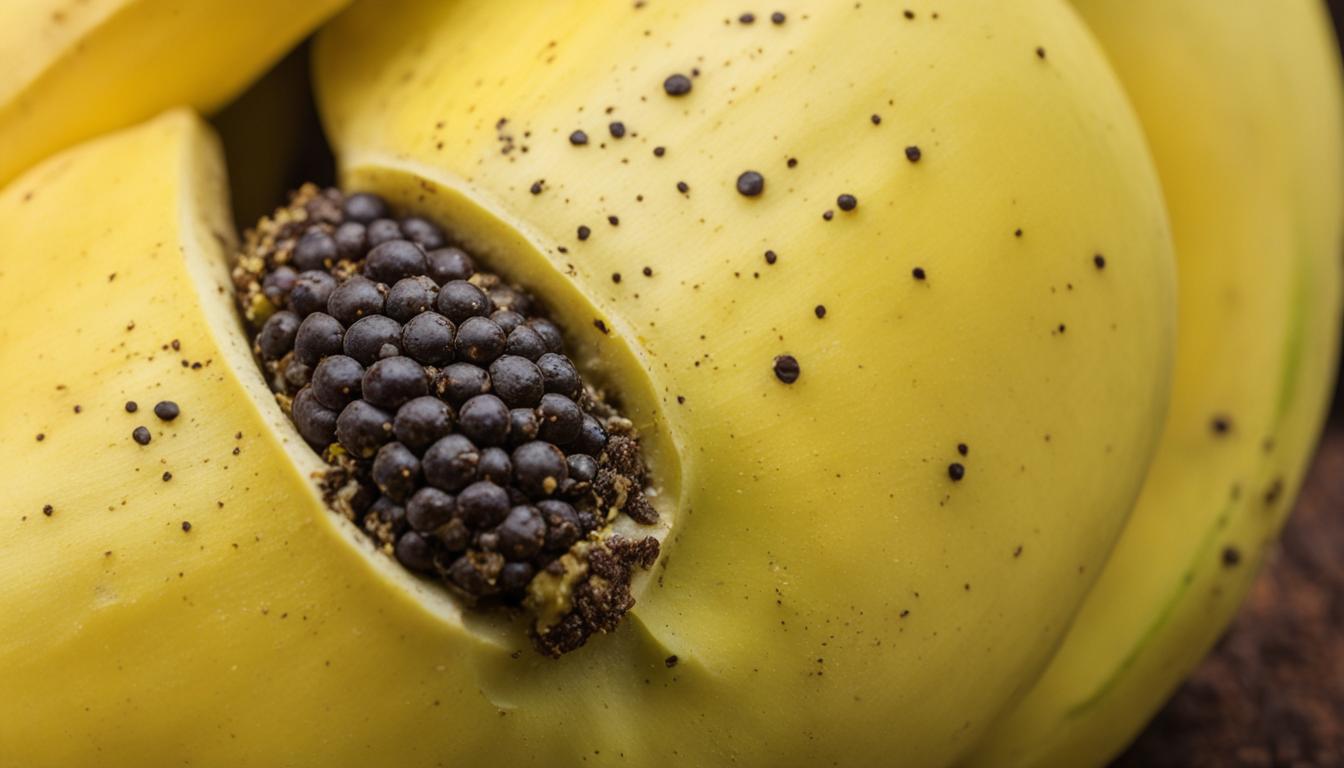Are you often unsure about when a baby banana is ready to be consumed? Knowing the indicators of a ripe baby banana is important to enjoy it at its best. In this section, we will discuss how to tell if a baby banana is ripe and indicate the perfect time for consumption. You will learn various techniques that can help you check the ripeness of a baby banana before consuming it.
Whether you are using baby bananas in cooking or eating them as a snack, it’s essential to understand the parameters to recognize a ripe baby banana. In the following sections, we will explore the essential signs that indicate a ripe baby banana and provide you with useful tips for checking the ripeness of a baby banana.
Check out the image below to identify a baby banana’s different stages of ripeness:
Signs of ripe baby banana
Identifying a ripe baby banana can be challenging, but several signs can help. Below we will explore the visual cues that indicate that a baby banana is ripe and ready to eat:
- Color: One of the most apparent signs of a baby banana’s ripeness is its color. A ripe baby banana is yellow with small brown spots. Still, when it begins to turn slightly brown all over, it may indicate that it is overripe.
- Texture: You can also identify a ripe baby banana purely by feeling its texture. When the banana’s skin is firm and smooth with a slight give, it signifies that it’s reached its peak ripeness.
- Brown Spots: One of the most reliable indicators of a ripe baby banana is the appearance of small brown spots. Contrary to popular belief, these spots do not signify that the banana is rotten. Instead, it indicates that the starch in the banana has broken down into sugar.
By recognizing these signs, you can confidently determine whether a baby banana is ripe and ready to consume.
Tips for Checking Baby Banana Ripeness
When selecting a baby banana, it is important to choose one that is ripe and ready to eat. Here are some valuable tips for checking the ripeness of a baby banana:
- Gently squeeze the banana: A ripe baby banana will yield to gentle pressure, but it should not be too soft or mushy.
- Inspect the color: A fully ripened baby banana will have a bright yellow color with no traces of green or brown.
- Smell the stem end: A ripe baby banana will have a sweet fragrance at the stem end, indicating that it is ready to eat.
Using these simple techniques, you can confidently select a ripe baby banana for consumption. Remember to check for these indicators before adding baby bananas to your grocery cart.
When is a baby banana ready to eat?
Knowing when a baby banana is ready to eat is essential for enjoying its full flavor and nutritional benefits. Once a baby banana has ripened, it is ready to be consumed. The best way to tell if a baby banana is ripe is by observing its color. The skin of a ripe baby banana turns bright yellow with small black specks. The presence of these brown spots indicates the formation of natural sugars, making it sweet and tender.
Another way to check if a baby banana is ready to eat is by gently squeezing it. A ripe baby banana should be soft but not mushy, and it should yield to pressure without bruising. If you notice that a baby banana is too firm, it means it is not yet ripe, and it may not taste as good as it should.
It is also important to note that the stem end of a baby banana can provide information about its ripeness. If a baby banana is green, it means it is not yet at its peak of ripeness and might need more time to develop. Over time, the stem end of the baby banana changes from green to yellow to brown, indicating that it is ripening. When the stem end of the banana is completely brown, it means that the baby banana is very ripe and should be consumed immediately.
In summary, a baby banana is ready to eat when its skin turns bright yellow with small black specks, it is soft to the touch but not mushy, and the stem end has turned yellow or brown. By following these guidelines, you can enjoy the sweet and delicious flavor of a perfectly ripe baby banana.

